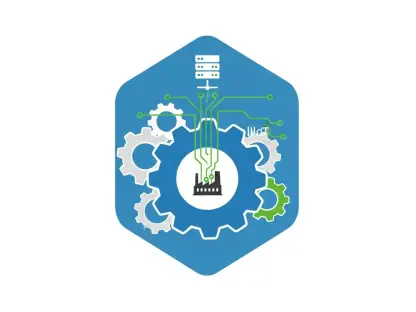For small business owners, managing inventory isn’t just a routine chore—it’s a critical component that can determine whether operations run smoothly or spiral into chaos, impacting everything from customer satisfaction to profit margins. Picture this: a bustling retail shop loses sales due to stockouts, or a startup overstocks unsold goods, tying up precious capital. These scenarios are all too common without the right tools in place. Inventory management software offers a lifeline, automating tedious tasks, providing real-time insights, and ensuring businesses stay ahead of demand. With countless options flooding the market, selecting the perfect fit can feel overwhelming. How does one sift through the noise to find a solution tailored to specific needs?
This exploration focuses on five leading inventory management solutions—Zoho Inventory, Katana, Lightspeed, Square, and SalesBinder—each designed to address distinct challenges faced by small businesses. From startups with tight budgets to growing retailers managing multiple locations, these tools offer a range of features, pricing structures, and specialized capabilities. The aim is to break down what each platform brings to the table, helping business owners make informed decisions without getting lost in technical jargon or unnecessary complexity. Whether the priority is affordability, scalability, or industry-specific functionality, there’s likely a match among these options.
Beyond individual software features, broader trends are reshaping how inventory systems support small businesses. The shift to cloud-based platforms means access from anywhere, which is a game-changer in today’s mobile-driven world. Integration with e-commerce and accounting tools is another key focus, reducing manual errors and unifying data across operations. By understanding both the specifics of each solution and the evolving landscape, small businesses can pinpoint software that not only solves current pain points but also supports future growth. Let’s dive into the critical aspects of inventory management and explore what makes these tools stand out.
Understanding Inventory Software Needs
Why Inventory Management Matters
Effective inventory management serves as the backbone of any small business, directly influencing operational efficiency and financial health. Without a solid system, businesses risk stockouts that frustrate customers or overstocking that drains resources—both scenarios can cripple growth. Software solutions step in to automate tracking, predict demand, and minimize human error, allowing owners to focus on strategy rather than manual counts. For instance, a small retailer could lose significant revenue if popular items run out during peak seasons, while a manufacturer might struggle with production delays due to untracked raw materials. The right tool transforms these challenges into manageable tasks, ensuring stock levels align with sales patterns and customer expectations. Beyond immediate benefits, streamlined inventory processes build trust with clients through reliable service, creating a ripple effect on long-term success.
Moreover, inventory software isn’t just about counting products—it’s about gaining control over the supply chain. Small businesses often operate with limited resources, making every decision about stock a high-stakes one. A missed reorder point or inaccurate data can lead to costly disruptions, especially for those dependent on just-in-time delivery models. Modern systems provide real-time updates and alerts, helping to anticipate issues before they escalate. This proactive approach is vital for maintaining cash flow, as capital tied up in unsold inventory can hinder investments in marketing or expansion. By adopting technology to handle these complexities, businesses position themselves to adapt to market shifts, whether it’s a sudden spike in demand or supply chain hiccups. Ultimately, inventory management tools empower smarter decision-making across the board.
Key Features to Look For
When evaluating inventory software, certain functionalities stand out as non-negotiable for small businesses aiming to optimize operations. Real-time tracking tops the list, providing instant visibility into stock levels to prevent shortages or excess inventory. Low-stock alerts complement this by flagging when it’s time to reorder, reducing the risk of missed sales opportunities. Barcode scanning is another essential, cutting down on manual entry errors and speeding up processes like checkouts or stocktaking. For businesses selling across multiple channels—think online stores and physical locations—multi-channel support ensures inventory syncs seamlessly, avoiding discrepancies. Integration with existing tools, such as e-commerce platforms or accounting software, is equally critical to maintain a cohesive workflow without duplicating efforts. These features collectively form a foundation for efficient stock control.
Scalability should also factor heavily into the decision-making process. A small business today might be a mid-sized operation tomorrow, so software must accommodate growth without requiring a complete overhaul. Look for platforms offering tiered plans that unlock advanced features as needs evolve, such as managing multiple warehouses or handling complex purchase orders. User-friendliness cannot be overlooked either; a system packed with capabilities is useless if the team struggles to navigate it. Mobile access adds another layer of convenience, enabling management on the go, especially for owners juggling multiple responsibilities. Beyond these, consider industry-specific tools—some software caters to retail, while others focus on manufacturing needs like production planning. Matching these capabilities to business priorities ensures the chosen solution delivers maximum value over the long haul.
Exploring Top Inventory Software Options
Zoho Inventory: Affordable and Versatile
Zoho Inventory emerges as a go-to option for startups and small businesses operating on tight budgets, thanks to its free plan that supports up to 50 monthly sales. This entry-level offering includes single warehouse tracking, making it ideal for those just starting to formalize inventory processes. Beyond affordability, the software integrates smoothly with e-commerce platforms like Shopify and Amazon, ensuring sales across channels are reflected in stock data. Features such as label printing, backorder management, and drop shipping capabilities add practical value for businesses with diverse needs. For those anticipating growth, paid tiers introduce advanced tools without breaking the bank. This balance of cost and functionality positions Zoho Inventory as a versatile choice that doesn’t overwhelm users with unnecessary complexity while still addressing core inventory challenges effectively.
Another strength of Zoho Inventory lies in its seamless connection with other applications within the Zoho ecosystem, alongside major external platforms, making it a versatile tool for businesses. This integration reduces the hassle of managing disparate systems, a common pain point for small businesses lacking dedicated IT support. Whether syncing with accounting tools or streamlining online sales, the software ensures data flows effortlessly, minimizing manual updates. Its user-friendly design further enhances accessibility, allowing teams with minimal tech experience to adopt it quickly. While the free plan may not suffice for businesses with high transaction volumes or multi-location demands, the scalable pricing structure offers a clear path forward. For small operations prioritizing affordability without sacrificing essential features, Zoho Inventory delivers a compelling solution that adapts to evolving operational requirements.
KatanBuilt for Manufacturers
Katana carves out a niche for small to medium-sized manufacturers with its specialized focus on production planning and inventory control. Priced at $199 per month—or $179 if billed annually—it sits in a higher cost bracket but justifies the investment with tailored tools like materials resource planning (MRP) and bill of materials management. Real-time inventory tracking ensures manufacturers stay on top of raw materials and finished goods, preventing production bottlenecks. Reorder point settings based on price thresholds add precision to stock replenishment, a critical aspect for cost-conscious operations. With a strong Capterra rating of 4.6 out of 5, Katana has earned recognition for tackling the unique challenges of manufacturing environments, making it a powerful ally for businesses in this sector seeking efficiency.
Integration capabilities further elevate Katana’s appeal, connecting seamlessly with e-commerce platforms like Shopify and accounting systems like QuickBooks. This ensures that sales data and financial records align with inventory updates, reducing discrepancies that could disrupt production schedules. Unlike more generalist tools, Katana’s focus on manufacturing-specific needs—such as tracking component availability for complex products—sets it apart. However, its price point may deter non-manufacturers or smaller businesses without intricate production demands. For those in the target audience, the software offers a depth of functionality that generic solutions often lack. Manufacturers looking to streamline workflows and maintain tight control over inventory will find Katana a worthy investment, provided the budget aligns with its specialized feature set.
Lightspeed: Retail Powerhouse
Lightspeed targets high-volume retailers with a robust platform designed to manage inventory across multiple locations and sales channels. Its ability to handle complex tasks like creating purchase orders, bundling products, and adjusting prices in bulk streamlines operations for businesses with extensive catalogs. Unlimited barcode label generation and low-stock alerts ensure stock levels remain optimized, even during peak sales periods. Operating on a subscription model with various pricing tiers, Lightspeed also offers a 14-day free trial, allowing potential users to test its capabilities risk-free. Dedicated account managers assist with onboarding, smoothing the transition for retail teams. This focus on retail-specific needs and multi-location support makes it a strong contender for growing businesses in the sector.
Beyond core inventory features, Lightspeed excels in delivering a cohesive experience for retailers juggling physical stores and online sales. The software syncs inventory across all channels, preventing overselling or stock discrepancies that could harm customer trust. Its advanced reporting tools provide insights into sales trends, helping businesses make data-driven decisions about stock replenishment or product promotions. While the platform’s breadth of features might feel excessive for smaller operations with simpler needs, it’s a perfect match for retailers scaling up. The subscription cost reflects the depth of functionality, but the free trial mitigates the risk of commitment. For retail businesses aiming to consolidate operations under a single, powerful system, Lightspeed offers the tools to manage growth without sacrificing efficiency.
Square: Perfect for Mobile Sellers
Square stands out as an ideal solution for small retailers and mobile sellers, blending point-of-sale (POS) functionality with inventory management in a single platform. One of its biggest draws is unlimited item listings across all plans, accommodating businesses with large or diverse product ranges. Low-stock alerts and barcode printing simplify stock control, while inventory syncing across physical and online stores ensures consistency. This unified approach reduces the need for multiple tools, a significant advantage for entrepreneurs on the move. Additionally, Square’s free online store option lowers the barrier to entry for cost-conscious businesses looking to establish a digital presence without hefty upfront costs. Its design prioritizes ease of use, catering to users who value simplicity alongside effectiveness.
The strength of Square lies in its mobility and adaptability, particularly for sellers at markets, pop-up events, or food trucks. The integrated POS system captures sales data in real time, updating inventory instantly to reflect transactions, which is crucial for avoiding overselling during busy periods. This seamless connection between sales and stock management sets Square apart from standalone inventory tools. While it may not offer the depth of features needed for complex manufacturing or multi-warehouse setups, its focus on retail and mobile operations hits the mark for its target audience. The combination of affordability and functionality makes it a practical choice for small businesses prioritizing flexibility. For those whose operations revolve around direct customer interactions, Square provides a streamlined way to keep inventory and sales in sync effortlessly.
SalesBinder: Multi-Location Made Easy
SalesBinder addresses the needs of businesses managing inventory across multiple locations, offering a free plan that supports unlimited sites—a rare and valuable feature. Core functionalities include invoicing, purchase orders, barcoding, and shipment tracking, covering the essentials for distributed operations. A mobile app for iOS users enhances accessibility, enabling stock management from anywhere. While the free tier provides a solid foundation, higher plans unlock integrations with accounting software like QuickBooks Online and Xero, as well as advanced options like kitting and bundling. This tiered structure ensures scalability, allowing businesses to start small and expand capabilities as demands grow. SalesBinder’s emphasis on multi-location support makes it a standout for operations spread across different regions or stores.
Another key benefit of SalesBinder is its adaptability to varying business sizes and needs within the multi-location framework. The software’s design accommodates complex inventory scenarios without overwhelming users, maintaining a balance between functionality and simplicity. For businesses with geographically dispersed operations, the ability to track stock across all sites in real time prevents logistical headaches and ensures consistency. While the free plan lacks some deeper integrations, it still delivers significant value for cost-sensitive users. Paid tiers cater to those requiring more robust connections with other business tools, ensuring data flows smoothly across systems. For small businesses with multiple locations or plans to expand geographically, SalesBinder offers a flexible, budget-friendly solution that grows alongside operational complexity, making it a strategic choice for long-term planning.
Trends Shaping Inventory Software
The Shift to Cloud-Based Systems
A dominant trend in inventory management software is the widespread adoption of cloud-based systems, fundamentally changing how small businesses operate. Unlike traditional on-premises solutions, cloud platforms provide access from any internet-connected device, granting unparalleled flexibility. All five reviewed tools—Zoho Inventory, Katana, Lightspeed, Square, and SalesBinder—embrace this model, enabling owners to monitor stock levels, process orders, or analyze data whether they’re at the office or halfway across the globe. This accessibility proves invaluable for entrepreneurs managing operations remotely or across multiple sites. Additionally, cloud systems often come with automatic updates, ensuring businesses always have the latest features without manual intervention. This shift reflects a broader move toward agility in business technology, prioritizing real-time access over static, location-bound setups.
Security and scalability further underscore the appeal of cloud-based inventory tools. These platforms typically offer robust data encryption and backup features, safeguarding critical business information against loss or breaches—a major concern for any operation handling sensitive stock data. Scalability is another advantage, as cloud solutions can adjust to increased usage without requiring significant infrastructure changes, unlike traditional software that might demand costly hardware upgrades. For small businesses, this means lower upfront costs and the ability to adapt as operations grow. The trend also aligns with the increasing reliance on mobile workforces, where team members need to collaborate or update inventory from diverse locations. As cloud technology continues to evolve, it remains a cornerstone of modern inventory management, delivering the flexibility and efficiency small businesses need to stay competitive in a dynamic market.
Specialization and Multi-Channel Support
Inventory software is increasingly designed with specialization in mind, catering to specific industries or business models to deliver targeted solutions. For example, Katana focuses on manufacturers with tools for production planning and materials tracking, addressing needs that generic platforms often overlook. Lightspeed, on the other hand, targets high-volume retailers, offering features for multi-location retail management. This trend toward niche functionality ensures that businesses aren’t burdened with irrelevant features, instead receiving tools that directly address their unique challenges. Specialization also improves user experience, as interfaces and workflows are tailored to familiar industry processes. As small businesses diversify, software providers are responding by creating solutions that align precisely with sector-specific demands, from retail to production environments.
Equally significant is the rise of multi-channel support, a necessity in an era where businesses sell through physical stores, online platforms, and marketplaces simultaneously. Tools like Zoho Inventory and Square excel in syncing inventory across these channels, preventing issues like overselling or mismatched stock counts. This capability is critical for maintaining customer trust—imagine promising an item online only to find it’s out of stock in reality. Multi-channel integration also streamlines operations by consolidating data into a single view, reducing the need for manual reconciliation. As e-commerce continues to grow alongside traditional sales avenues, software that bridges these worlds becomes indispensable. Together, specialization and multi-channel support reflect how inventory tools are evolving to meet the nuanced, interconnected nature of modern small business operations, ensuring both precision and reach.









